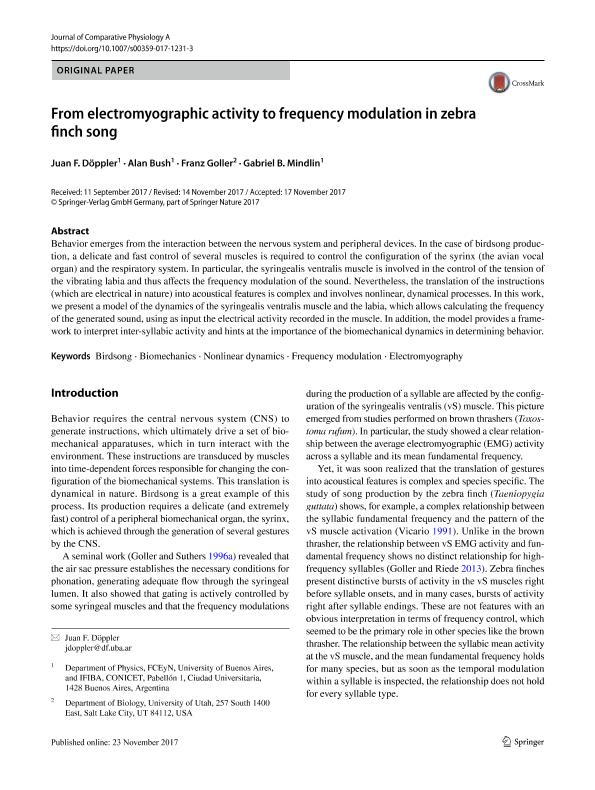Artículo
From electromyographic activity to frequency modulation in zebra finch song
Fecha de publicación:
11/2017
Editorial:
Springer
Revista:
Journal Of Comparative Physiology A-sensory Neural And Behavioral Physiology
ISSN:
0340-7594
e-ISSN:
1432-1351
Idioma:
Inglés
Tipo de recurso:
Artículo publicado
Clasificación temática:
Resumen
Behavior emerges from the interaction between the nervous system and peripheral devices. In the case of birdsong production, a delicate and fast control of several muscles is required to control the configuration of the syrinx (the avian vocal organ) and the respiratory system. In particular, the syringealis ventralis muscle is involved in the control of the tension of the vibrating labia and thus affects the frequency modulation of the sound. Nevertheless, the translation of the instructions (which are electrical in nature) into acoustical features is complex and involves nonlinear, dynamical processes. In this work, we present a model of the dynamics of the syringealis ventralis muscle and the labia, which allows calculating the frequency of the generated sound, using as input the electrical activity recorded in the muscle. In addition, the model provides a framework to interpret inter-syllabic activity and hints at the importance of the biomechanical dynamics in determining behavior.
Archivos asociados
Licencia
Identificadores
Colecciones
Articulos(IFIBA)
Articulos de INST.DE FISICA DE BUENOS AIRES
Articulos de INST.DE FISICA DE BUENOS AIRES
Citación
Döppler, Juan Francisco; Bush, Alan; Goller, Franz; Mindlin, Bernardo Gabriel; From electromyographic activity to frequency modulation in zebra finch song; Springer; Journal Of Comparative Physiology A-sensory Neural And Behavioral Physiology; 204; 2; 11-2017; 209-217
Compartir
Altmétricas




